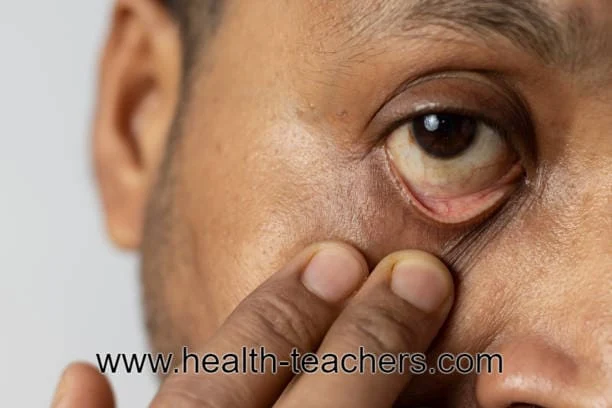Greater awareness about hepatitis is a dangerous disease that can not only protect people from this disease but also reduce the risk of transmitting it to each others.
It is important to go through the stages of diagnosis and get treatment if needed. But the status of awareness and treatment of hepatitis in the world can be estimated from the statistics that only 5% of patients are aware of their disease and less than 1% have access to its treatment facilities.
Expensive injections used in the recent past to treat this malignancy were also a major reason for avoiding treatment. In addition, testing for hepatitis is complicated and expensive, and the low capacity of most diagnostic laboratories in many countries is a contributing factor, resulting in low awareness of hepatitis worldwide and limited and inadequate treatment facilities.
This means that those who need treatment are not able to get it, resulting in not only a loss of quality of life but also a major driver of the spread of hepatitis. Advertisements on many walls of the country's small and large cities, printed in some newspapers, and aired on a few cable networks seem to convey that the country is on the rise from hepatitis.
These messages and advertisements in the name of treatment are often from institutions, companies, and individuals, which instead of curing hepatitis patients, cause deterioration of their disease and play with the lives of patients.
The societal perception that hepatitis is incurable, rumors surrounding its authentic and modern treatments, and stigmatization of the disease makes patients indebted to donors, often resulting in regret. In such a case, the message needs to be spread that hepatitis is a completely curable disease. And its modern allopathic treatment has more than 95% positive results and whatever negative opinions are spread about it have nothing to do with reality.
All this explanation is necessary because, on the one hand, hepatitis disease is increasing in Pakistan, on the other hand, ignorance of the causes of the spread of the disease among the people, lack of modern treatment facilities and availability are making the situation complicated. . Someone has rightly said that prevention is better than cure and prevention of hepatitis is 100% related to prevention only.
That precaution is in the form of using contaminated drinking water, and substandard food items, taking care of personal hygiene, and using a new syringe while injecting, confirming that it is free from all kinds of diseases injecting blood.
Disinfecting tools used for dental treatment and extractions, using only your personal toothbrush to brush your teeth, using your own nail clippers to trim your nails, every time you shave or get a haircut.
Using a new blade, using a new and sterilized needle for all kinds of body markings and ear piercings, disinfecting women's make-up and facial cleaning products in beauty parlors, Pregnancy of an infected woman with the doctor's advice, and caution in sexual relations with an infected person can not only prevent the disease but also prevent its spread, but due to ignorance of these precautions, most of the victims of hepatitis are infected. It happens.
Currently, 32.8 million people in the world are suffering from different types of hepatitis. And every year 17 lakh 50 thousand new cases of hepatitis C are coming out while in 2015 13 lakh 40 thousand deaths occurred due to hepatitis.
So far the deaths due to this disease have increased by 22%. According to the World Health Organization's Global Hepatitis Report 2017, the number of hepatitis B patients worldwide has reached 257 million, which is 3.5% of the world's population, while the number of hepatitis C patients is 71 million. Which is one percent of the world's population.
There are five types of hepatitis namely A, B, C, D, and E. All these types lead to numerous liver disorders and even cancer. Hepatitis A is usually caused by the consumption of contaminated water and food, also known as jaundice or jaundice. It is also spread through direct contact with an infected person. Lack of personal and environmental cleanliness also leads to the spread of this disease.
In particular, not washing hands with soap after using the toilet and the practice of washing hands with soap before preparing food and eating can lead to hepatitis. While B, C, and D transfusion of blood and body fluids, sexual contact with an infected person, operation, dental treatment, and surgical instruments that are not properly sterilized, body peeling, needles, and any contaminated skin penetration.
Needle blades, nail cutters, and knives can cause it. Similarly, Hepatitis E mostly shows its color due to consumption of contaminated water, especially in rain and floods. The current concern is that there are five types of hepatitis in Pakistan and it is our misfortune that the World Gastroenterology Organization has expressed some of its research reports.
According to the survey called Prevalence of Hepatitis B and C in the General Population of Pakistan in 08-2007 by the Pakistan Medical Research Council, at that time 7.4 percent of the country's population was suffering from hepatitis B or C, that is, until ten years ago, this disease was 1 crore 18 lakh. had captured the Pakistanis.
In terms of Hepatitis C, 9 out of the top ten most affected districts in Pakistan were Punjab and Sindh. In this regard, the most affected district in the country was Wahari where the rate of this disease was 13.1 percent. At the provincial level, the Ghotki district in Sindh was affected by this disease. Hangu district of Khyber Pakhtunkhwa and Musa Khel district of Balochistan were more affected by hepatitis C at the provincial level.



